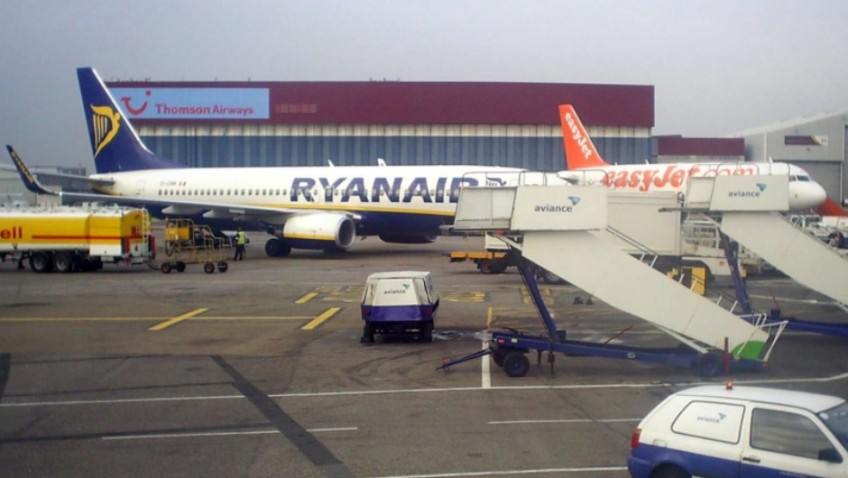Low cost airlines such as easyJet and Ryanair have undergone dramatic changes in the last two years to win over new customers who were previously put off by budget travel.
Just a few years ago Ryanair’s colourful boss, Michael O’Leary, was threatening to introduce “standing room only” flights and a “pay per pee” policy, charging customers a pound to spend a penny during a flight. Now the Irish low cost airline, is trying to overhaul its image.
Ryanair launched its “always getting better” strategy in late 2013 to improve services after customers tired of its punitive charges and inflexible policies. Improvements have included reduced fees, more carry-on baggage and allocated seating.
The move to stop “unnecessarily pissing people off”, in the words of chief executive Michael O’ Leary, coincided with profit warnings in late 2013. Ryanair admitted it had failed to keep up with the expectations of consumers who turned to its more passenger-friendly rival, easyJet.
Mr O’Leary admitted last year, its rival easyJet “wiped the floor with us” by introducing customer service improvements much earlier.
In the past few years, the travel game has changed drastically
The rise in low-cost airlines means that nowadays it can be one of the cheapest ways to get around. Budget airlines offer cheap flights between European (and more recently, further afield) cities – these flights are usually found for under £200 return, but it’s not unheard of to get flights for under £30 return.
Asides from the budget airline giants like Ryanair and easyJet, who have varied and growing flight routes that serve almost every major European city, most budget airlines operate between several specific regions.
Smaller airlines may only have flights that fly between international hubs and key cities in their home country, and some airlines may specialise in flights between certain countries. For example, Hungarian airline Wizz Air connects Western European cities to several key areas of Eastern Europe, such as the Czech Republic, Hungary, Poland, Serbia, Lithuania, Bulgaria and Romania.
Currently, there are around 37 low-cost airlines operating, although turnover is fast and new companies are coming onto the scene annually.
Low-cost airlines deliver ‘no-frills’ service – you really do get what you pay for, and anything more than the flight will cost you. Do expect to pay for:
- Food and drink – often far more expensive than even airport food, so it is a good idea to bring food with you.
- Check in bags – most airlines allow passengers to carry hand luggage up to 10kg for free (check sizing policies), but charge to store luggage in the hold. One 15kg bag could cost you from £15-30, and sports equipment and pushchairs are always more expensive to transport. It is cheaper to buy check in luggage online. Also most airlines charge for overweight luggage – don’t underestimate the weight of your bag, or you will pay a hefty fine.
- Tax – as decided by the government.
- Seat allocation – seats aren’t allocated on low cost airlines, so if you want to ensure you sit by your partner or friend, it will cost you around £5 to reserve a seat.
- Admin fees – for any flight or name changes can be costly.
- Check-in and boarding card fee – online check-in is free with most budget airlines but forget to do this and you will face a hefty fee at the check-in desk. Most will allow you the option of printing your boarding card yourself but don’t forget, as replacing the ticket at the desk can be costly. Some airlines are ticketless, and only require a confirmation number and passport so do check before you fly.
- Credit card fee – it is cheaper to buy your tickets with a debit card, as booking with a credit card currently carries around a 2% fee. However, booking with a credit card is safer – if you spend more than £100 and something goes wrong with the flight, the credit card company and airline are jointly liable.
- Extras – a lot of low-cost airlines will also try to sell you travel insurance, car hire and hotel bookings, so check your bill before you pay to avoid any unwanted expenditure!
Although the hidden costs of low-cost airlines can be extensive and off-putting, flights are still cheap even with added costs and fees. Flights are generally relatively well-run and, although quite basic, value for money. When booked tactically, flights can cost as little as £15 one way, including fees.
Other things to watch out for on low-cost airlines
- Flights schedules are often tightly packed, so expect domino effect delays if one flight is late.
- Leave enough time between connecting flights, as budget airlines will rarely transfer your luggage from plane to plane- you may have to collect luggage and check it in again.
- Budget airlines often use secondary airports to keep prices low. These airports are often found in locations, far away from the city they are meant to be in. Although these airports do offer transportation to the city centre, this can be costly so organise transport to the city before you fly, or risk losing the initial saving you made on your air fare.
Expect nothing more than a safe basic flight. In my many years of flying with this type of airline I persuaded myself that this was just a method of transport and in some cases cheaper than a bus ride.




